🌿 Ready to Transform Your Garden? 🌿
Whether you’re dreaming of a lush retreat, a colorful flower haven, or a sleek modern landscape, creating your perfect outdoor space starts with a plan.
This month, I’m sharing five key steps to help you design a garden that fits your vision, whether you're starting small or tackling a major transformation. With a little guidance, your dream garden is closer than you think!
Let’s dig in and bring it to life! 🌱✨Let’s get growing! 🌱
Decide
You may have the time and the money to do the entire plan all at once, but most people will likely have to implement in stages. How do you decide which section of your garden to work on first?
There are 2 main approaches: the easiest or the highest impact.
The easiest might be filling in an existing bed. Perhaps you have a few sad shrubs in a sea of mulch, and you want the bed to be full and lively. Working on this bed would probably be a great place to start if you are looking for an easy win.
The other approach is to choose an area that might take a lot of work to transform but would have the highest impact on your quality of life outside. For example, let’s say you dream of turning your dull, lawn-covered backyard into something like this:
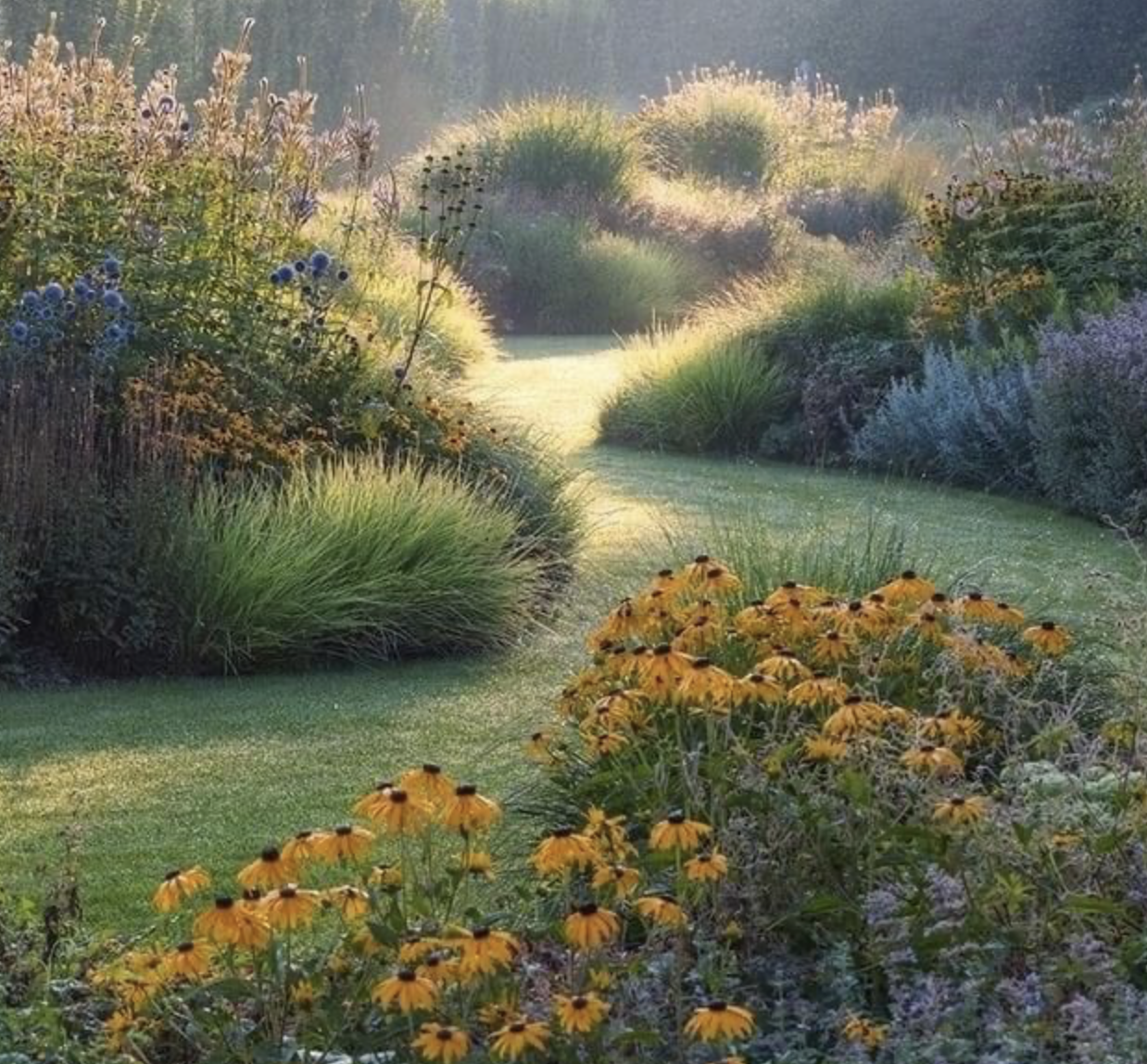
In order to accomplish this, you will need to kill a lot of the lawn and buy a lot of plants. It might be difficult to accomplish all in one season, so you might want to kill lawn in sections and create new beds every year, so that by year 5, your backyard will look like the above picture.
Assess the site
Once you’ve decided on whether you are going to work on an existing bed or create a new one, you need to study the site.
What does that spot look like? How much water does it hold? How much sun does it get? What are you hoping to put there?
Paying attention to the existing conditions of that site is essential. You cannot change reality without changing the site, and even then, that doesn’t always work. For example, if you have a forest, but you want a meadow, you will have to cut down the trees, at the very least. But if you have a wet zone in your yard, and you dream of a cacti landscape there, you are out of luck.
If you work on nothing else, observe how much water and sun the site gets throughout the year. I can’t stress enough how valuable this info is.
Plant hierarchy
Some plants grow best in sun, others in shade. Some like it wet, others dry. Matching the plant to the site is the key to success.
Having said that, plants have a hierarchy of...we'll say: difficulty.
A. At the top, we have evergreen trees. Think white pine, southern magnolia, eastern red cedar (actually juniper), and American Holly. Evergreens are hardest to grow to maturity, and are slow to grow. But once they are established, they usually last for many years.
B. Next we have deciduous trees (those that lose their leaves in the fall). Our region, NWA, is the most western part of the Eastern Deciduous Forest. Think oaks, maples, hickory, sassafras, ash, sycamore, willow. These are probably the most valuable ecologically. They can be hard to establish as baby trees, but usually make it once established, and outcompete nearby herbaceous plants.
C. Third we have shrubs. These are woody species like evergreen trees and deciduous trees, but they are usually under 15 ft tall. Think mock orange, sumac, buckthorn, paw paw, ninebark, buttonbush, buckeye, serviceberry. Generally easier to establish than evergreen trees and deciduous trees, but not as easy to grow as…
D. Herbaceous perennials, such as grasses and forbs. These die down to the ground every year after a few frosts, and come back up again in Spring. Herbaceous perennials are some of the easiest plants to grow. This is what I specialize in. Check out my website and my prices if you would like to work with me.
E. Next we have vines. Vines get an unfair bad rap, and I will dedicate a future newsletter to working with vines. I love vines, and I think we need to incorporate a lot more in our landscapes.
F. Finally, annuals and bulbs are the easiest to grow. They will germinate, produce lots of flowers, and sometimes spread and self-seed. With annuals, you will have to scatter seed every year, since they die every winter.
All this is to say, if you want a quick win, go for annual seeds, get perennial bulbs, and plant grasses and forbs. This is cheap, easy color.
If you are wanting an evergreen privacy hedge, it will be difficult to establish, expensive to install, and you will have a high rate of attrition. It doesn’t mean you shouldn’t do it, especially if that’s your dream. But you need to have realistic expectations (and deep pockets).
The Design
Whether you are going for a meadow, a shrubland, a forest, or an edge, there are many ways of approaching the design process. Here are some considerations:
Straight lines vs Clumps
Planting in a straight line works for borders and privacy. Straight lines create order and separation. On the other hand, having clumps of the same kind of plant blending in with nearby clumps of another type of plant creates a relaxed feel. If you are doing the clump method, you will need at least 5 plants of the same species in one section (see pic below).
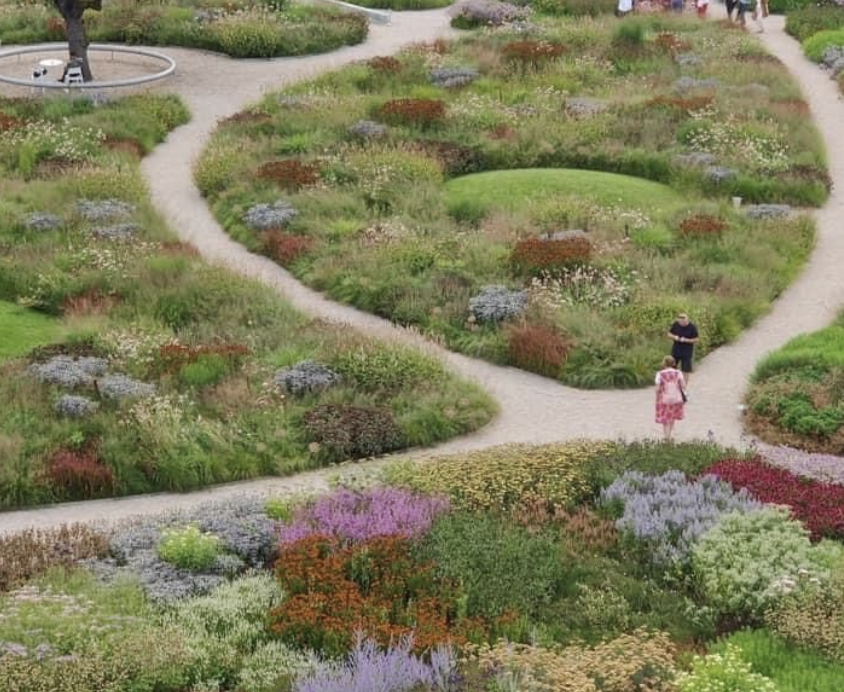
Monoculture vs Diversity
How many species do you want in your dream garden? Some people are minimalists, and really just want 3-4 species, and that’s it. Others go for abundance and want to squeeze in as much plant diversity as possible (like pic below).
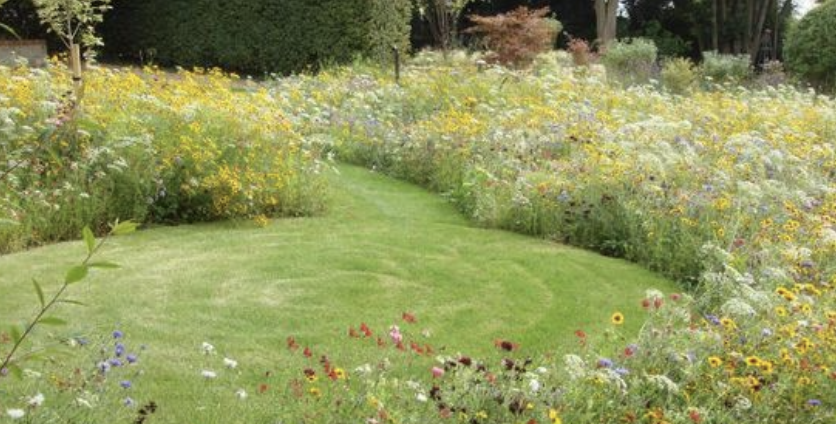
Legible vs Chaotic
Do you want an easily recognizable pattern (see pic below) or do you prefer a wilder ‘let it be’ approach?
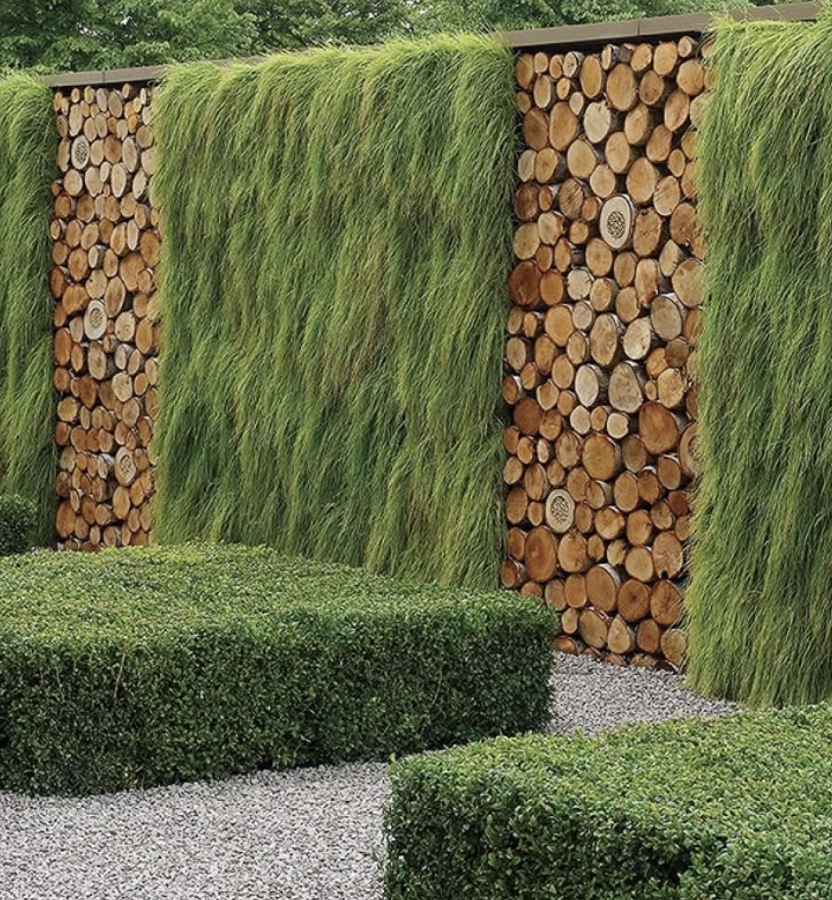
Color vs Height
Along those lines, if legibility is important to you, do you want to organize your design based on color or height? In other words, we can have legibility if we unify the design around a color or 2, even if the plants are all different heights (see pic below). On the flip side, we can have a ‘tidy mess’ if we keep plants to, say, 3 ft, but we have them scattered in random ways.
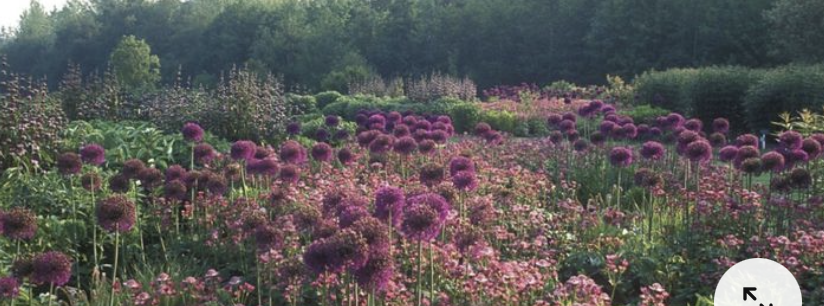
You can combine these strategies in all kinds of ways. For example, a lot of my beds are angular (straight lines), but there is a great deal of species diversity in them. In my front meadow, I gradually increase the height from groundcover to 3 ft, Tidy mess: success :) see pic below:

A few general rules of thumb:
-Plant deciduous trees at least 10 ft from your foundation (do as I say, not as I do ;).
-For herbaceous plants, a good rule of thumb is 1 plant per sf.
Buy Plants
Ok, now comes the fun part: shopping!
If you have a sunny spot and need some quick color for the spring, buy ¼ lb of the bachelor buttons and crimson clover, and scatter them every 2 weeks until the end of April
Then, come May, scatter the zinnias and cosmos in your sunny spot every week before a rain.
For mostly herbaceous perennials, my favorite online retailer is Prairie Moon. Their user interface allows you to filter options based on region, height, width, sun, and soil. I also like Ozark Soul and Pollen Nation.
Order your plants as soon as you can. They will not arrive until they are ready to be planted…later in the season.
Here are a few faves of mine:
Fave evergreen hedge (sun): taylor juniper
Fave deciduous trees (sun): oaks
Fave shrubs for the home landscape:
New Jersey Tea
Lead Plant
Fragrant Sumac
Elderberry
Fave forbs for
Moist sun: Ozark Bluestar, Blue Wild Indigo, Golden Alexander
Dry sun: Butterfly Weed, Pale Purple Coneflower, Aromatic Aster
Moist shade: Zig Zag Goldenrod, Early Meadow Rue
Dry shade: Heart leaved Aster, Yellow Pimpernel
But before you go, I want to hear from you! Tell me about your dream garden—what are you envisioning? A cozy cottage retreat, a vibrant pollinator paradise, or a sleek modern landscape? Whatever it is, I’d love to know!
Until next time, happy gardening! 🌱
-Claudia Vialto garden design website!


